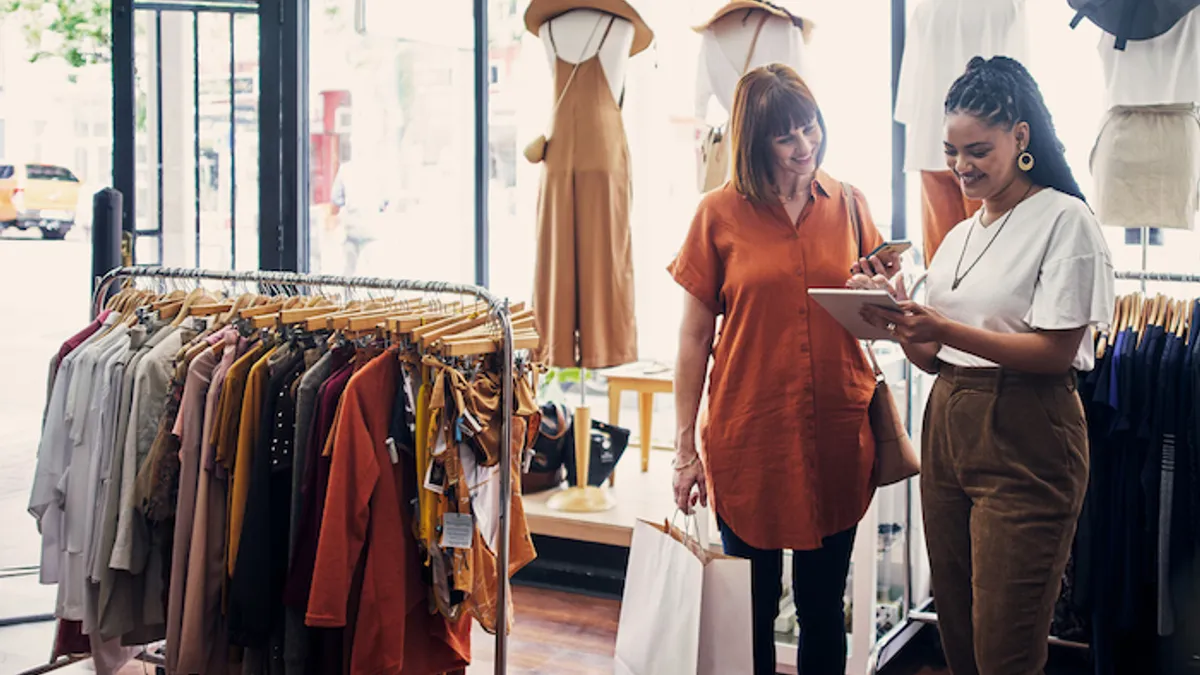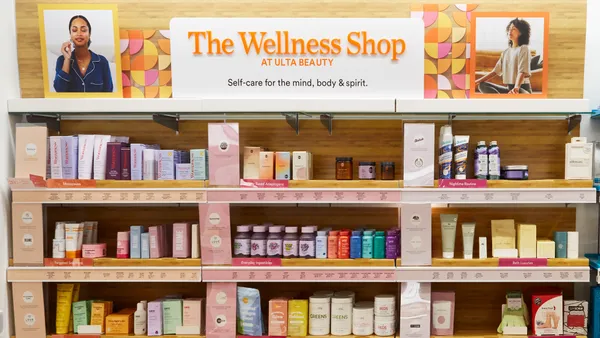These days, car trunks are laden with bags as consumers arrive curbside to collect their goods, shopping carts squeak through busy store aisles, and downtown areas echo with conversation as transactions occur.
Behind the scenes, CIOs and IT teams work with technological solutions and partners to ensure these pick-ups and shopping expeditions continue seamlessly, securely, and enjoyably. You're further expanding these capabilities to enhance experiences for customers and employees, and addressing the challenges your company will face in the ever-changing world of retail.
And, as you know, there certainly are some challenges.
What's going on
The competitive retail industry is well-accustomed to margin pressure. In addition, this market faces newer challenges, such as attracting employees to an industry with historically low hourly pay rates, plus a steady drumbeat to maximize profits. The industry recognizes the conundrum, with 83% of retailers most heavily investing in recruitment and retention above other priorities, according to a survey of executives by Deloitte. Despite this, 74% expect shortages in customer-facing positions.
In addition, almost half the executives polled predict a shortfall in professionals for the skilled IT and analytics roles necessary for digitally-enabled retail. And 56% of retail executives anticipate a shortfall of hourly workers in the supply chain, logistics, and distribution.
Despite these hurdles, retail sales are thriving. In the United States, sales rose 17.6% year-on-year in February 2022, after increasing 14% in January 2022. And U.S. retail sales are expected to reach more than $4.9 trillion in 2022, up 14% from 2021, according to the National Retail Federation (NRF).
What's getting done
Like a virtual conveyor belt, cloud technology is helping retailers move through turbulent times. The flexibility and agility of the cloud also help retailers address future challenges and opportunities, both long-planned and unexpected.
The cloud's decentralized architecture enables retailers to adapt at supersonic speeds. In the last couple of years, retail businesses morphed, seemingly overnight, into hybrid entities that offered consumers a mix of online, curbside, and in-store shopping, including buy online, and pick up in-store (BOPIS). As CIO, you’re leading the pivot to incorporate whatever's around the corner. Having nimbly empowered administrators and other office staff to adopt remote and now hybrid work, you are at the forefront of deploying proven IoT solutions in bold, new ways.
This often means working with partners that have developed API-based tools and apps for retail—obstruction detection, retail analytics, inventory management, and customized splash pages, for example. Some specialize in horizontal applications or services such as security or network management.
In addition to discovering proven applications that seamlessly work with cloud-managed smart cameras, sensors, and access points, teaming up with partners can ease some of the pressure you might face finding IT and other employees for open roles.
Labor crunches
Many retailers are embracing automation, both in front and away from consumers, to address staff shortages.
IT leaders are automating network reporting, upgrades, and patching to reduce the time and errors often associated with manual processes. This also liberates technology professionals to focus on more business-critical tasks or allows retailers' IT teams to function smoothly if employees leave, without rushing to fill vacant positions. Likewise, you'll find many store operators are integrating physical and cybersecurity and using automated triggers and alerts to inform security agents when necessary.
By identifying repetitive, manual processes and eliminating them through automation, you're not only improving your company's security, but you're also improving employee experiences—both business users, who are less likely to encounter a problem due to proactive patching and updates, and IT professionals, who are no longer responsible for dull but necessary patching and updating.
Speaking of experiences, the self-checkout trend is well underway, and some retailers are experimenting with new methods. This year, three Manhattan Starbucks stores will offer thirsty customers the option of using Amazon Go. Similarly, Amazon plans to debut its "Just Walk Out" technology in two Whole Foods stores (a wholly-owned subsidiary of Amazon) and its Go convenience stores in 2022.
Not to be outdone, as part of its Walmart+ membership, the retail giant's Mobile scan & go app allows shoppers to do exactly what its name suggests—scan items as they're placed in the cart, check out digitally, pay, and then head out.
Hide, seek, find
Getting the right goods to consumers where and when they want them is tougher since they have so many choices in color, size, delivery site, and more.
Retailers, too, have options—as long as they have the data and analytics to power these choices. Many recognize they must expand these capabilities, with 39% of retail executives increasing their investments in analytics-based decision-making.
For some, that means setting up smart stores and gathering insight into shoppers' preferences. This invaluable data—garnered in part by measuring footfalls, heat mapping, and shopper behavior—helps stores rapidly adapt to changing consumer requirements and measure current patterns.
On the inventory side, smart cameras can be equipped to report whether stockrooms are operating at low, medium, or high levels of use, which can prevent over-ordering and needlessly tying up resources. Bluetooth® labels that look like a UPS shipping label work with sensors to track items that require monitoring for temperature changes, tampering, shock, or moisture.
In addition to maintaining accurate inventory counts, these solutions help reduce shrinkage, a significant challenge for retailers. In 2020, more than 15% of U.S. retailers suffered inventory shrinkage rates of 3% and higher.
Shoppers' maven
As an IT leader, you're guiding more than your team. Technology’s integral role in and throughout stores, warehouses, and distribution hubs mean you are helping maneuver the entire business into new opportunities and through ongoing and novel challenges.
You're far from alone. There is a marketplace of partners ready to assist, well-versed in cloud-managed smart stores. Just as technology capabilities are combining to deliver even stronger results, you can bring together the complementary skills of your IT staff and trusted advisors to create the shopping experiences customers want to enjoy and retailers want to provide.
Turn your stores into smart stores with Cisco Meraki. Check out how we can help.










